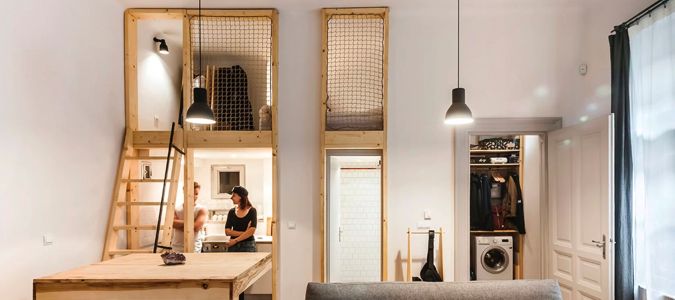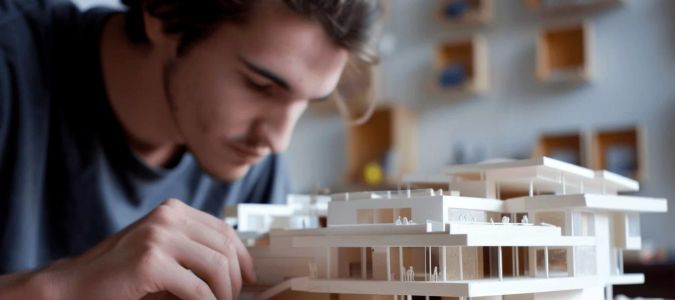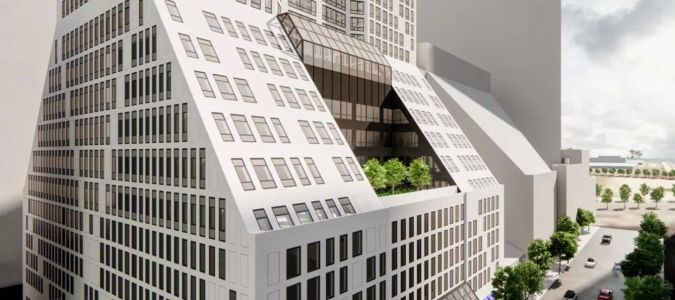How Architects Integrate Smart Home Technology Into Your Building Project
The integration of smart home technology into building projects has become one of the most exciting developments in modern architecture. With advancements in technology, architects are now able to offer clients homes that are not only aesthetically pleasing but also equipped with systems that improve energy efficiency, security, and convenience. If you’re building a new home or retrofitting an existing one, understanding how architects integrate smart home technology into your building project is key to ensuring a seamless blend of design and function. Let’s dive into how architects approach this process and the benefits it brings to homeowners.
Benefits of Smart Home Technology in Building Projects
Smart home technology offers a range of benefits that can enhance the quality of life for homeowners. When integrated thoughtfully into a building project, these technologies not only boost comfort but can also help save time, reduce energy consumption, and improve security. Here’s how:
- Increased Convenience: Smart devices such as voice-activated assistants, automated lighting, and climate control systems offer convenience by making daily tasks easier and more efficient.
- Energy Efficiency: Smart thermostats, lighting systems, and appliances can significantly reduce energy consumption by adjusting based on usage patterns and preferences, lowering utility bills in the process.
- Enhanced Security: Smart security systems, including cameras, motion detectors, and smart locks, offer increased peace of mind. These systems can be monitored remotely, providing constant surveillance and alerts if something unusual happens.
- Home Automation: Integration of smart home technology allows for automation, enabling homeowners to control various devices from a smartphone or other connected devices, even when they are not at home.
Architectural Design Considerations for Smart Home Integration
When incorporating smart home technology into a building project, architects must take several design considerations into account. These decisions impact the functionality, aesthetics, and efficiency of the technology in the final design. Here are some of the key factors architects consider:
- Wiring and Infrastructure: Smart home systems require robust electrical and Wi-Fi infrastructure to function properly. Architects must plan for the installation of wiring and the positioning of hubs or routers to ensure optimal connectivity throughout the house.
- Space Planning: Certain smart devices, such as speakers, cameras, and sensors, need to be strategically placed within the design to ensure they are both functional and discreet. Architects plan for these placements early in the design phase to avoid clunky installations later on.
- Technology Integration: The technology must blend seamlessly with the design of the home. Architects will incorporate aesthetic choices such as hidden speakers, recessed lighting, or built-in smart outlets to avoid disrupting the flow of the design.
- Future-Proofing: Smart technology evolves quickly, and architects must design systems that can be easily updated or expanded in the future. Ensuring that a building is ready for future upgrades is a key consideration when integrating smart home features.
Smart Home Technologies to Integrate into Your Building Project
Smart home technologies are continuously evolving, offering a vast array of options that can be customized to fit the specific needs of a homeowner. Some of the most popular smart technologies that architects are incorporating into new builds include:
- Smart Thermostats: These devices learn your preferences and can automatically adjust the temperature to reduce energy usage while keeping your home comfortable.
- Smart Lighting: Lighting systems that can be controlled remotely, automated based on time of day, or adjusted for mood can enhance the atmosphere and energy efficiency in a home.
- Security Systems: Advanced security features such as smart locks, doorbell cameras, and motion sensors add a layer of protection to any building while offering remote access to homeowners.
- Home Entertainment Systems: Smart speakers, TVs, and streaming devices that can be controlled through voice commands or integrated with other home automation features enhance entertainment experiences.
- Smart Appliances: Fridges, ovens, and washing machines that can communicate with homeowners and other devices in the home can optimize efficiency and convenience.
Challenges in Integrating Smart Home Technology
While smart home technology offers numerous advantages, integrating these systems into an existing or new building project presents several challenges. Architects need to consider the following:
- Compatibility: Ensuring that various smart devices and platforms are compatible with one another can be a challenge. Architects need to choose products that work seamlessly together to avoid any connectivity issues.
- Cost Considerations: While the benefits are clear, integrating advanced technology into a building project can increase costs. Architects need to balance the desire for cutting-edge features with the overall budget of the project.
- Security Concerns: With the rise of interconnected devices, security is a critical consideration. Architects must ensure that proper cybersecurity measures are in place to prevent vulnerabilities in the system.
The Future of Smart Home Technology in Architecture
The future of smart home technology in architecture looks incredibly promising. As technology continues to improve, architects will have even more tools at their disposal to create homes that are not only smarter but more sustainable and efficient. From integrating renewable energy sources like solar panels with smart systems to developing new ways to reduce energy consumption, the possibilities are endless. In the coming years, we can expect more innovative and integrated approaches to smart home design that will revolutionize how we live in and interact with our homes.
If you’re looking to integrate smart home technology into your building project, whether it’s a new construction or a renovation, it’s important to work with architects who are experts in this field. At 10 Jay Street, we specialize in designing modern, smart homes that balance cutting-edge technology with timeless architecture. Contact us today to learn more about how we can help you create your ideal living space, designed with both style and convenience in mind.








